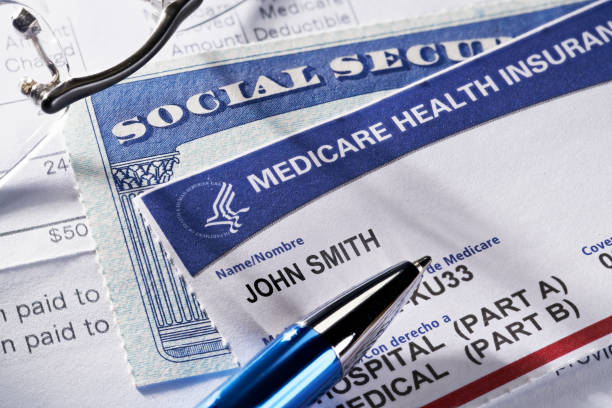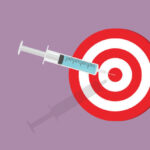Are you interested in understanding CPT code 99457 in remote patient monitoring (RPM) and its reimbursement potential? Like all 5 CPT Codes (99453, 99454, 99091, 99457,99458), CPT 99457 has specific guidelines and qualifications for reimbursement. This complete guide to 99457 billing and reimbursement helps outline all the procedures for CPT 99457 reimbursement, according to The 2024 CMS final rule.
RPM reimbursement increases the opportunity for medical organizations to generate revenue while improving patient care experiences and health outcomes. The following section covers who can perform RPM services and qualifies to receive RPM services.
Which Patients Qualify for Reimbursement Under CPT Code 99457?
All remote patients covered by Medicare qualify for reimbursement CPT Code 99457.
Is a Chronic Condition Required to Qualify for RPM?
No. In the 2021 Final Rule, CMS states that clinicians can furnish RPM services for acute and chronic care patients. Those who qualify are as follows:
- Patients with chronic conditions. For example, diabetes, hypertension, heart disease, asthma, or COPD.
- Post-surgical patients who need to monitor their recovery and wound healing.
- Geriatric patients, particularly those with multiple chronic conditions or limited mobility.
- Patients in rural or remote areas with difficulty accessing in-person care.
- Patients with acute conditions that require close monitoring, such as COVID-19.
Who is Qualified to Order, Perform and Bill for Remote Patient Monitoring Services?
RPM services are ordered, performed, and billed by the patient’s physician or another qualified healthcare professional. Patients must transmit vital sign data at least 16 days before billing for CPT Code 99457.
CMS defines a physician or other qualified healthcare professional as “an individual who is qualified by education, training, licensure/regulation (when applicable) and facility privilege (when applicable) who performs a professional service within his/her scope of practice and independently reports that professional service.”
While CMS defines a clinical staff member as “a person who works under the supervision of a physician or other qualified health care professional and who is allowed by law, regulation, and facility policy to perform or assist in the performance of a specified professional service, but who does not individually report that professional service.”
Reimbursement for Services Under 99457
All Medicare beneficiaries can participate in remote patient monitoring programs, but a few requirements exist. The following explains billing requirements for remote patient monitoring CPT code 99457.
- The RPM device must fit within the FDA’s definition of a medical device.
- A Patient must opt-in for the service before ordering the remote patient monitoring device.
- A patient evaluation is needed for patients new to RPM.
- Patients already enrolled in RPM during the Public Health Emergency (PHE) can continue receiving RPM services.
- The patient must use the RPM device for at least 16 days a month to bill for CPT codes 99453 and 99454.
- Data collection must be HIPAA-compliant.
Understanding CPT Code 99457 in RPM Billing and Its Reimbursement Potential
CPT 99457 is considered ‘incident to’ under general supervision. This allows providers to commission third-party remote patient monitoring companies to assist with RPM services. Therefore, providers can manage more patients, which means increased revenue without significantly impacting workflow.
What is the Reimbursement Rate for CPT Code 99457?
The average national payment rate for this code is $48.80.
How Does Reimbursement Work for CPT Code 99457?
CPT Code 99457 allows a practice to bill for patient care and physician-patient interaction. At least 20 minutes of interactive, virtual communication is necessary during one calendar month. Providers can generate revenue by performing remote patient monitoring services.
However, they must use the correct CPT reimbursement codes. Once CPT code 99457 has been billed, the add on code CPT 99458 may be used for time more than 20 minutes.
How Often is CPT Code 99457 Billed?
As mentioned, a physician or qualified healthcare professionals can bill CPT code 99457 every 30 days. However, this is for only once per patient per month, regardless of the number of devices a patient uses. Therefore, providers must bill CPT Code 99457 every 30 days.
As discussed, providers may bill remote patient monitoring as ‘incident to.’ This means that third-party companies can perform RPM services under the general supervision of the billing physician.
Must Devices be FDA-Cleared to Bill for CPT 99457?
According to CMS, devices must be “medical devices as defined by the FDA.” Medicare does not require the device to be cleared by the FDA. However, some providers may require using FDA-cleared Class II remote patient monitoring devices.
Although an RPM medical device is marketed as FDA-registered, it does not mean it is FDA-cleared. It is essential to note that with FDA-cleared remote patient monitoring medical devices, healthcare organizations and patients can rest assured that they receive instant and reliable patient health data remotely.
What RPM are devices used for CPT Code 99457?
Health organizations may use several patient monitoring devices to reimburse for RPM services under CPT code 9954:
Can a Patient Use Multiple Remote Patient Monitoring Devices?
Many patients have several medical conditions and require multiple remote patient monitoring devices. However, in this circumstance, providers must only bill once per patient for 30 days. Again, patients must record at least 16 days of vital sign data, even when a single patient uses multiple devices.
Outsourcing Remote Patient Monitoring Services
CPT billing codes enable healthcare organizations to outsource remote monitoring services to third-party remote patient monitoring companies. An outsourcing partner can help a healthcare organization save time and resources by performing device set-up, education, data review, and facilitating the billing processes.
Tenovi works exclusively with companies offering healthcare providers remote patient monitoring solutions. In addition, we serve RPM service and software, chronic care management, and telehealth companies. Book a free demo with Tenovi today.






